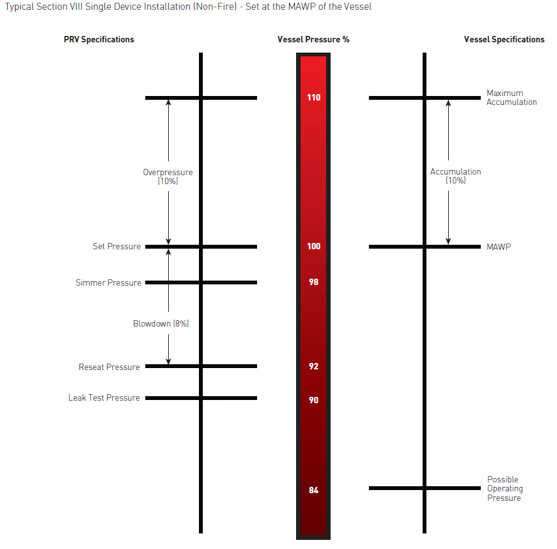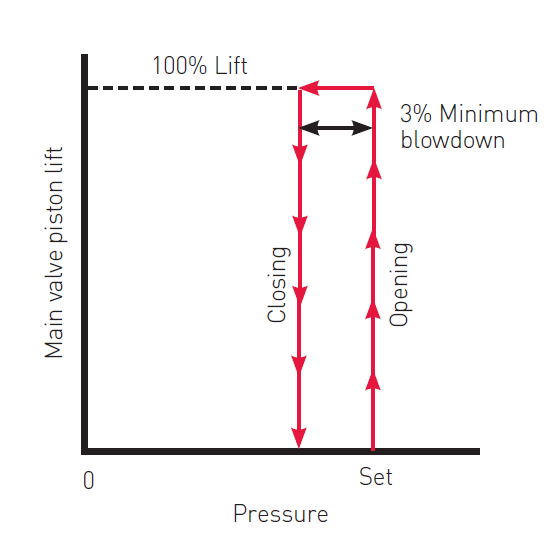The ASME Boiler and Pressure Vessel Code Section VIII sets out requirements for standard pressure vessels and the relief valves protecting them.
Traditionally, direct spring safety valves are the predominate choice for Section VIII applications. The reason for this preference is that direct spring safety relief valve designs are inexpensive and mechanically simple. There is also a confidence in the use of the design because of their use in ASME Section I applications.
The evolution of design and materials of construction has now made pilot operated safety relief valves (POPRV) a viable Section VIII solution. The use of POPRV’s can result in a lower cost of ownership and will provide an improvement to the unit operation that the POPRV is protecting.
ASME VIII requires a pressure protection installation as follows:
ASME Section VIII dictates that a pressure safety relief valve only needs to provide bubble-tight shutoff at 90% of setpoint. As the system pressure reaches 95% of the set point, there is enough system force to begin to overcome spring force and cause the valve plug to lift from the seat causing leakage. This event is called simmering and not only results in the loss of process media, but the impact force between the plug and seat, as simmering is occurring, will affect the metallurgical integrity of the valve’s internals.
Pilot operated pressure relief valves use process pressure, instead of a spring, to keep its primary disc closed at pressures below setpoint.
The benefit of a POPRV is that it is possible to operate a system closer to the valve’s set pressure and not have leakage or unwanted opening cycles. This increased operating pressure can optimize the equipment design and allow for the maximum throughput for the process. Since process pressure is being sensed by a small pilot orifice, a POPRV is smaller and lighter than a direct spring PRV design.
The diagram below shows the difference in lift performance between a direct spring and piloted operated safety relief valve.
ASME code dictates that any PRV must be shown to be fail-safe if any essential part of the valve is compromised. For example, if the piston seal is damaged and cannot hold pressure, the main valve will fail open. Code also dictates that the pilot must be self-actuated and use the process itself and not an external source to operate. The pilot will use the process pressure to either snap open or modulate the main valve during a relief cycle.
In applications with incompressible media (eg. water), pilot design alterations are necessary to ensure stability during main valve lift. Pilot design cannot allow for the immediate full evacuation of dome pressure to occur at the set point.





